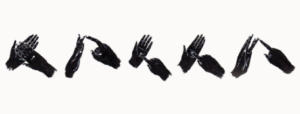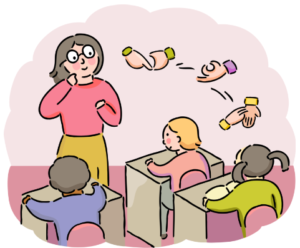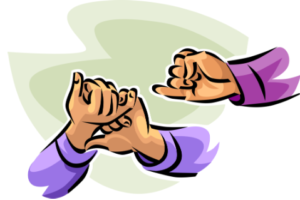Sign Language British

It’s important to encourage people to learn British Sign Language (BSL) to communicate better with the deaf and hard of hearing. It is essential to be immersed in a culture and integrate with people who have additional communication needs. Nowadays, it is much easier to study sign language British than it was thirty or forty years ago. However, it’s still a process that involves hard work and commitment. Through this blog, we hope to explain how you might go about learning the sign language British.
Step 1: Understanding the Basics
Introduction to BSL
Background and history of Sign Language British
British Sign Language (BSL) has a long and interesting history. It dates back to the 16th century and the emergence of early deaf education. It developed as a natural language from within the deaf community in the UK and integrated its grammar and subculture. BSL was finally recognised as an official language in the UK in 2003. Recognising it as an official language for the first time in the UK’s history is important for the culture and the potential for proper teaching and support.

What sets Sign Language British apart from other sign languages?
BSL is different to other sign languages used across the world, including American Sign Language (ASL) and Auslan (Australian Sign Language). Each of these sign languages has its own grammatical rules, vocabulary and cultural context. Sign languages are not the same as each other. It’s a fundamental element of sign language itself. All spoken languages in the world are different from each other, and Deaf people understand this.
Complete our Nonverbal Communication Mastery course.
Learning the Alphabet
Learning Fingerspelling: The BSL Alphabet
The BSL alphabet is a fundamental part of BSL learners and practising signers alike. This unique variety of English, not always present elsewhere in the English-speaking world. It allows us to spell out names, places, and words without assigned signs by alphabetic spelling. The alphabet of BSL is divided into 26 individual hand shapes based on 26 letters in English. Fingerspelling and learning the alphabet involves learning and practising each handshape to master its movement and shape.

Practise letter recognition and Sign
Regular practice is the key:
- Learn all the letters one by one.
- Spell short words and names.
- Test your recognition and speed by using flashcards and other online tools.
- Train with other people.
Basic Vocabulary
Common Sentences and Phrases
Concentrate on learning common sentences and phrases that are used throughout everyday conversations. Learn to say things such as hello, goodbye, thank you, please and many more. Learn verbs, nouns, and adjectives, which are the core parts of a language and are often used in day-to-day conversations.

Greetings and Common Expressions
Using everyday expressions and greetings appropriately will help you engage and communicate effectively in various contexts. You can start by introducing yourself, asking basic questions and expressing common needs and feelings. You will then get to practice these expressions in context.

Step 2: Enrolling in a BSL Course
Finding a Reputable Course
Online Course vs. Course with face-to-face classes
There are benefits to online or face-to-face courses for making BSL (British Sign Language).
- Classes online could allow learners to be flexible and help them to disperse. For example, You have a small baby, so you can’t go out. So, you can learn anytime in an online course.
- In a face-to-face BSL course, one can learn difficult things but with 100 per cent confidence. The instructor and learners could make connections together, which allowed learners to get more practice and positive feedback from their peers.
I think about what you choose and what you can do.
Reputable Institutions
Qualified Instructors, take courses at approved and certified institutions and with certified professional instructors. To ensure quality, a curriculum dedicated to teaching BSL should ensure that all material is appropriately taught. Additionally, instructors who are native users of the language or approved and certified individuals will bring the rich culture of the Deaf community into the learning experience.
Beginner Courses
A typical introductory BSL Course provides an introduction to the basics of wording, grammar and fingerspelling. You will learn key signs and simple sentence structures. You will be able to confidently use your BSL to have a conversation. You will also learn about deaf culture and etiquette, specifically how to be respectful of the language and community.
Laying a Foundation of Fundamental Signs and Grammar The most helpful practices include active, regular exposure to the course itself:
- take notes in class,
- engage with the homework,
- study supplemental texts provided by your instructor.
Mastering the fundamentals will enable you to wade into more complex subjects and sustained, natural conversations.
Intermediate and Advanced Courses
Onto More Structured Language and Grammar. More complex vocabulary and grammar, as well as more advanced conversational skills, are taught in intermediate and advanced BSL courses This helps you to express more detailed ideas, feelings, and concepts. These courses will also teach you how to stay more fluent and use more complex sentence structures to have deeper conversations. The courses will also include specialist topics, such as technical terms and professional jargon needed in particular professions.
Selective Courses
specialise in an area of interest, or further education courses might offer you the chance to study an area of interest. For instance, if you have an interest in healthcare, BSL classes may give you further opportunities to refine your knowledge of aspects of communication that would be especially useful in that context. Having selective skills will make you a much more compelling and marketable customer for BSL services. Many places of work are more likely to employ someone with a specialism than someone with a basic grounding in BSL because the person will have a better understanding of the needs and context of that specific arena. This applies equally to work settings, where the professional who can engage in BSL is actually valuable, as well as to training settings.
Step 3: Practicing Regularly
Daily Practice Routine
- Make sure you practice each day.
- Set aside some time to review your vocabulary and practice letters and signs.
- Incorporate BSL into your everyday life.
- Sing along to videos.
- Practice in front of mirrors or with flashcards.
Use flashcards, apps and online resources
There are many apps available to practise BSL, including Sign BSL (£2.99 on iOS or £3.49 on Android, for a basic version) and 2Spike’s potential winner, Spread the Sign (free on both Apple and Android devices). Spread the Sign is a fun and addictive game. I mean, what’s not to like about spreading the Sign? What you could actually say is that YouTube is very helpful. There are a lot of good websites for practising BSL. You could practise using the website. You could look at the videos on the laptop.
Joining a BSL Practice Group
- Look for Local or Online Practice Groups. Finding some kind of practice group is a great way to get support and feedback, both from others learning BSL and native signers.
- Check out local BSL clubs or community groups in your area. There are also lots of online forums and groups that you can find on social media, such as Facebook, so you can collaborate with other BSL learners and native signers.
The benefits of group practice include Exposure to a wide range of signing styles and speeds, which helps you gain a better understanding and be more adaptable. Sharing learning experiences, tips, and kickbacks. Sharing motivation. Ongoing practice with others boosts your fluency and confidence in BSL.
Immersive Practice
Attend deaf events, social events, and cultural festivals to practise your signing in a real-life context. These opportunities are among the best ways to build up your signing fluency. Interacting with native users of BSL also helps you gain a clearer understanding of how BSL works.
Begin talking with BSL users
When you have the opportunity to talk with BSL users, allow yourself to practise delivering what you have learnt in everyday situations. Begin new conversations, pose questions and engage with your thoughts. By engaging more readily in casual BSL conversations with native signers, you expose yourself to more use of sign language and increase your overall fluency in BSL.
Step 4: Using Technology and Online Resources
BSL Learning Apps

Recommended Apps for Sign Vocabulary and Practice
There are a number of useful BSL study apps. When it comes to practising BSL, there are numerous apps available to help you improve your skills. For example, the apps ‘Sign BSL’ and ‘BSL Hands both have ample video and audio libraries of words and phrases that can help you learn new vocabulary around the clock. For example, videos and descriptions for the word ‘tea’.
Progress Tracking and Interactive Sections
Like the other apps on this list, the BSL learning apps also contain interactive sections such as quizzes, games and flashcards to help you remember what you have learned. Additionally, there are progressive modes of learning where you can set goals and monitor the way that you improve with time. This is perfect since it helps to keep you focused, motivated and on track.
Online Videos and Tutorials
You can learn BSL by watching YouTube and other video platforms. I recommend that people looking to learn BSL watch the Let’s Sign BSL channel and the BSL Zone channel on YouTube. They also have other great videos that help users understand grammar and jumpstart with some BSL. Whether you’re a beginner or an advanced learner, these channels are great resources. BSL experts also upload instructional videos to YouTube so you can start picking up signs and phrases on the road. It can be a bit tricky to keep track, but once you’re passionate about learning BSL, you will find a way!
Practising with Instructional Videos
Regularly practising with instructional videos enhances the retention of your signing. By pausing, rewinding and practising with each Sign until you feel confident, you’ll feel more in control of the learning process. Interactive tutorials that nudge you to practise by saying the English word or triggering you to respond to a question or animation add another layer of active learning.

BSL Dictionaries and Reference Materials
Dictionaries for Reference
If you want to expand your word bank, particularly for less commonly used words, you can use an online or physical dictionaries for BSL. The dictionaries will give you a transparent insight into the more complex signs that are used less often. The online dictionaries ‘Spread the Sign’ and ‘BSL SignBank’ have a searchable database for words searched alphabetically, with a short example video and a detailed description of how to do the Sign. The physical dictionaries are more convenient for offline use.
Step 5: Understanding BSL Grammar and Structure
Sentence Construction

Basic Sentence Structures in BSL The grammar and syntax of BSL are very different from those of English. However, some basic sentence structures in BSL are commonly used. These are related to topic and comment, where either the topic or comment comes first. This will make sense once we start looking at actual examples.
Distinct differences between the grammar of BSL and the grammar of spoken English include the fact that grammatical markers of tense and questions in BSL are mostly expressed in visual and spatial characteristics. For example, facial expressions and body language. In contrast, these might be expressed differently in spoken English.
Elevate your presence with our British Sign Language Basics course.
Non-Manual Features
The importance of non-manual features, for example, in giving facial expressions, movements of the mouth, and body language, can’t be stressed enough. They serve as
- grammar,
- feelings and
- nuances
that are not used in the hand signs. Training these will make it more natural for you to talk in BSL fluently and correctly.
Work on non-manual signals and their meanings. Practice non-manual features frequently while watching native BSL users, and put them into your signature. Use mirrors or video recordings of yourself signing to check your facial expression and body language to see if they fit with the intended meaning.
Asking Questions and Making Statements
Forming Questions in BSL Questions can often be indicated in BSL by various facial reactions such as raising the eyebrows for yes/no questions or forehead wrinkling for wh-questions (e.g., who, what, where). It is important to pay attention to these facial reactions and apply that information to your production.
Step 6: Immersing Yourself in the Deaf Community
Attending Deaf Events
Join Deaf Meetups, Festivals and Workshops
Attending Deaf meetups, festivals, or workshops allows you to practise your sign language with native signers and gain Exposure to the deaf culture first-hand. Furthermore, these events provide invaluable opportunities for learning and practising BSL in real-life situations.

Benefits of Cultural Immersion and Practice
An additional benefit of cultural immersion and practice is that experiencing deaf culture, going to authentic spaces, and tasting different kinds of foods/drinks that are uniquely enjoyed by the deaf community will serve as a positive motivation to continue learning BSL on a day-to-day basis, thus helping you to both become more fluent and gain a deeper appreciation and respect for the deaf community.
Volunteering and Advocacy
Volunteering with deaf people allows you to use your BSL in useful ways. There are various things you can do to volunteer at deaf events or support them in different ways. For example, you can work in deaf education or help with campaigns for deaf people. These experiences will improve your signing, give you experience and essentially connect you with a community.
Supporting Deaf Awareness and Inclusion Initiatives
Encouraging deaf awareness and inclusion can promote a change in people’s understanding of the deaf community as well as lead to more accessible spaces for them in the local community, such as theatres, cinemas, shops and pubs. Support local policy by encouraging the use of platforms and tools to promote deaf awareness and inclusion, such as public awareness campaigns, accessibility projects, and policy change. Supporting people learning Sign Language British will help us achieve our priorities of educating more people in the hearing community about sign language and inclusive practices towards people who are deaf.
Check out our Online British Sign Language Course or you can check this bundle.
Building Relationships with Deaf Individuals
Make friends and network
Develop friendships and networks with deaf people. Social events, clubs, or internet forums are good ways to meet people and learn more about BSL and deaf culture. Embracing native signers is a great opportunity to practise signing and learn about the deaf world.
Native BSL User as a Resource
Native BSL Users are invaluable resources for further exploring the language. Learn from their experiences, observe them sign, and get feedback on your learning. Signing with native signers will improve your BSL fluency, accuracy, and cultural competence.
Conclusion
So, here’s how to learn BSL: start from scratch, complete courses, practise, use apps and the internet, learn grammar and structure, and immerse yourself in deaf culture. Learn from deaf role models. Keep learning, keep practising. Reach BSL fluency, and your world will open up. You’ll be able to get your point across. You’ll be more inclusive, and you’ll have access to a multitude of rich cultural experiences.